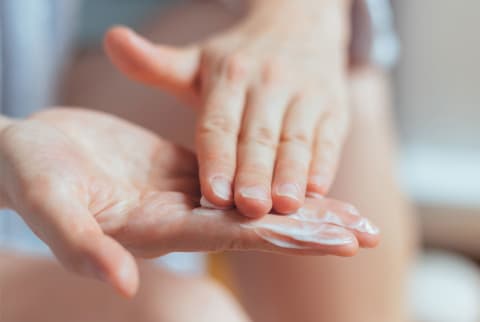
September 6, 2021 — 14:01 PM
Ask any dermatologist or esthetician how to make sure your skin and hair retain the vibrancy of your youth, and chances are sun protection ranks high on that list, if not as the No. 1 tip. And guess what? Your brows are no exception.
Yes, you need to protect your brows from excess sun exposure. It may sound intuitive, especially if you’re one to frost yourself in layers of sunscreen, but you’d be surprised by how many skip over the arches when applying their daily SPF. Ahead, find out why sun protection is the key to youthful, fluffy brows and how to apply the goop, sans white cast (it’s harder than it sounds!).
Why you need to apply sunscreen on brows.
Just as you protect your skin and hair from UV rays, so, too, should you protect the brows. You can always slip on a sun hat or rock a pair of wide-framed sunglasses to cover up the area when you’re outside (sun care is more than just a bottle of SPF, after all)—just don’t leave the brows completely unprotected, as they’re particularly vulnerable to those rays.
“The brow area is especially important because brows are the highest point of the face that shield the eyes,” says celebrity brow artist René de la Garza (Think about it: Makeup artists recommend tapping a highlighter on the brow bone, as that’s where the sun would naturally hit). “Excessive amounts of sun exposure can make brow hairs dry and brittle,” and that crispiness can lead to sparser patches over time, altering your brow shape. Not to mention, they can fade in color—as someone with naturally light brows, I can attest they all but disappear in the summer, which is why I up my brow tinting schedule during the summer months.
Oh, and on that note, it’s extra imperative to protect your brows after going for a tint, and especially if you have freshly microbladed or microshaded arches: The sun can fade the color more quickly, which may require a touch-up or two. The brow area may be more photosensitive after dermaplaning as well (since you’re lifting the top layer of skin and peach fuzz).
How to minimize a white cast.
All that to say, sun protection is nonnegotiable to keep those face framers fluffy and vibrantly hued. For sunscreen, we’re partial to a broad-spectrum mineral number, featuring zinc oxide—which poses another challenge, given zinc oxide’s uncanny ability to leave a ghostly cast in its wake.
Granted, mineral sunscreens have come a long way—you can find plenty of elegant options, many with color-correcting tints that won’t leave a chalky residue. But the brow area is a tricky one: Still, many find white flecks caught between the delicate hairs, especially if you have darker hair or regard the whole experience a goopy mess.
beauty & gut collagen+
The one-step beauty routine for youthful skin, healthy hair & strong nails.*

Sunscreen serums are much more lightweight than their standard lotion counterparts, and their thinner consistency leaves a practically undetectable trace on the brows. And because these are skin-care/SPF hybrids, they’re often loaded with other actives, like hyaluronic acid and antioxidants, which can further lubricate and protect those arches.
To apply a sunscreen serum on the brows, massage a dollop onto the hairs with your fingertips, then brush up with a clean spoolie to disperse the product through the strands.
Apply tinted brow gel afterward.
Now, let’s say you applied your go-to physical sunscreen and you notice some residue caught between the brow hairs. Don’t fret—simply let it dry down for a beat, then take your favorite tinted brow gel and cover up those white patches. The pigment should easily disguise any discoloration in a snap (find our favorite brow gel options here).
The brow area is an oft-forgotten yet crucial area to protect from the sun. It’s one of the highest points of your face, which means it’s more vulnerable to those UV rays. And while applying a zinc oxide formula can leave a white cast, there are some ways to get around it without resorting to brittle, unprotected brow hairs.







